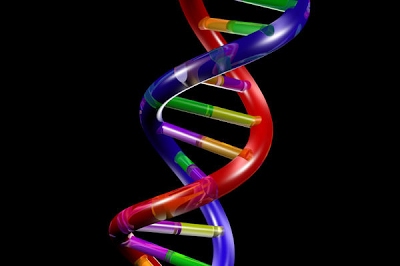What is DNA?
DNA is a double helix
Complementary bases
Two takeaway points
What is DNA?
DNA (deoxyribonucleic acid) is a large molecule which carries the genetic information, or blueprint, of all life on Earth. Mutations arising in the DNA code account for the diversity upon which evolution by natural selection can work. Therefore, it is not far-fetched to say that DNA is one of the central, most important molecules in living organisms.
For such an important molecule, it sure looks beautiful:

DNA is a double helix
DNA is a double helix i.e. two individual strands running along each other in an anti-parallel way, connected to one another by relatively weak hydrogen bonds. DNA’s structure can be learned easily by thinking about the strands and the “stuff in-between” separately.
DNA and RNA are key carriers of biological information. For example, DNA may store a gene coding for haemoglobin or insulin, which is then processed by RNA and ribosomes (which are sophisticated machines themselves made of RNA and proteins) to manufacture those proteins.
Both DNA and RNA are nucleic acids (that’s the “NA” part of their acronym). They also contain a sugar group of a 5-carbon ring called a pentose. In DNA this is deoxyribose, while in RNA it’s ribose. This completes their respective names: deoxyribonucleic acid and ribonucleic acid.
